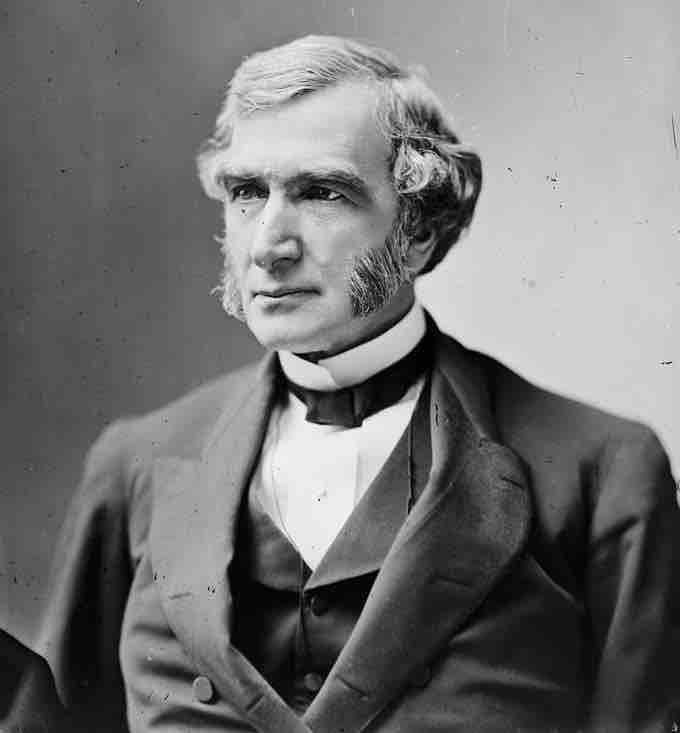Union Governance
Following the secession of the Southern states, the absence of Southern Democrats in Congress allowed the Republican Congress in Washington to enact legislation that reshaped the nation's financial, tax, land, and higher-education systems. Prior to secession, the South had resisted policies that would hurt the plantation economy, including tariffs to promote industry and land grants for family farms. With the establishment of the Confederacy, Republicans in Congress enacted sweeping federal changes, including implementation of the Morrill Tariff and passage of the Homestead Act, Pacific Railroad Act, and National Banking Act. The latter established a system of national banks in 1863, and promoted development of a national currency backed by bank holdings of U.S. Treasury securities.
By taxing British imports, the Morrill Tariff provided an additional source of revenue and encouraged the establishment of domestic factories. The Morrill Tariff also impacted immigration, as tens of thousands of Europeans were drawn to America for high-wage factory and craftsman jobs.
The Pacific Railroad Act of 1862 promoted the construction of the transcontinental railroad in the United States. The government provided land grants to railroad companies and issued government bonds for financing. These opportunities encouraged railroad-construction companies to open up the western plains and California. Railroads were also encouraged to sell tracts for family farms at low prices with extended credit.
The 1862 Homestead Act opened up public-domain lands for family farms at no cost. This act was unpopular among Southern slaveholders, who wanted to see more land dedicated to plantations. Agriculture prospered during the war due to the demand from Union troops and Britain, which was heavily reliant on U.S. wheat. The government also sponsored agricultural training programs during this period, through the newly established Department of Agriculture and the Morrill Land Grant College Act.
Confederate Governance
In February 1861, the six states that had seceded at that point formed the Confederate States of America and unanimously elected Jefferson Davis as president and Alexander Stephens as provisional vice president. Davis was elected to serve a six-year term without the possibility of reelection.
The Confederate Constitution was adopted on March 11, 1861. Much of the Confederate Constitution replicated the U.S. Constitution verbatim. However, the Confederate Constitution placed greater emphasis on the rights of individual member states and contained several explicit protections of the institution of slavery.
For the first year of the war, a provisional Confederate Congress functioned as the Confederacy's legislative branch. The permanent Confederate Congress began its first session on February 18, 1862. This Congress followed the U.S. model of a bicameral legislature: Two senators represented each state, and members of the House of Representatives were apportioned according to free and slave populations within each state. Two Congresses sat in six sessions until March 18, 1865.
The significance of individual votes and the independence of each voter was a unique feature of the Confederate Congress due to the absence of guiding political parties. Congress addressed military concerns such as control of state militias, conscription and exemption, and economic and fiscal policy, and supported the Davis administration in foreign affairs and peace negotiations.

Justin Smith Morrill
The Morrill Tariff, named for Vermont Representative Justin Smith Morrill, was strongly opposed by the South.